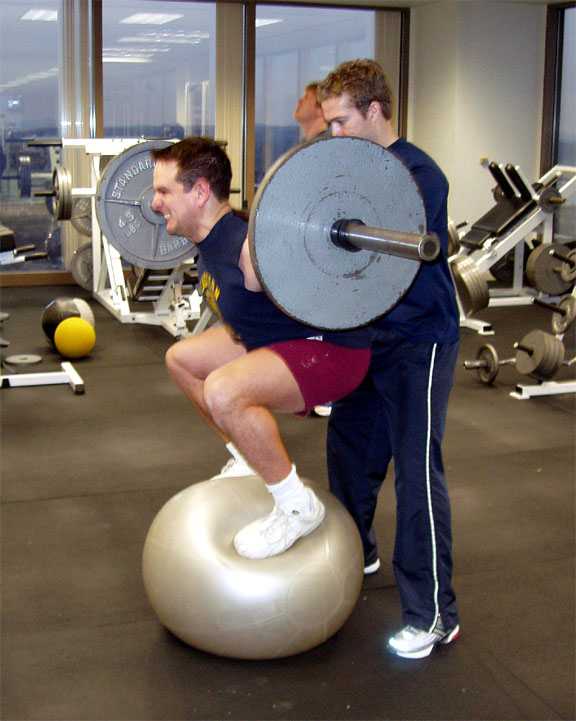
Your reputation depends on getting results for your clients and by extension so does your livelihood. If you injure a client, both can suffer. Positive results get you referrals, while an injury has the opposite effect. Whether they express it or not, most people hire a personal trainer to keep them safe or at least to exercise properly. Injury prevention is the cornerstone to a good program and you are ultimately the architect of whatever program you assign.
Primum non nocere is a Latin phrase which means first do no harm. This concept that doing no harm is the first priority comes from the Hippocratic Oath and is one of the principle precepts of bioethics. When you take on a client you have a responsibility to them that goes beyond a simple contractual or monetary obligation; there is an ethical, value based obligation to do no harm. A person is trusting in you to provide them with a professional service. It is compulsory that you weigh the risk of any program or exercise against the benefit that the client may derive from performing it. But the obligation to do no harm extends beyond just program design.
Here are some simple tips for injury prevention.
Client Screening
There are many steps that you can take to greatly reduce the risk of a person getting injured while exercising. One of the most important things that you do is a client screening. The client screening helps identify any preexisting health conditions and determines what is safe to do and what may be contraindicated. The screening should be more than just paperwork. Once you have completed the initial documentation and have a signed release you should perform a physical screening to help asses any muscle imbalances or abnormal body mechanics.
You should also asses the person’s current aerobic condition, flexibility and strength condition. No physician would prescribe a course of treatment without first diagnosing the patient. If we always assign a one size fits all program to each client we train we are doing a disservice to the client and assuming a big risk that a person may get hurt. Some people are quite efficient at doing an exercise in perfect form while using improper biomechanics. If you have a muscle imbalance that was not identified during a proper screening you will actually be training a person’s dysfunction. The assistive muscles can become strong enough to do the job of the prime movers. This becomes quite obvious in quadruped, unilateral exercises such as a one leg bridge but can easily be disguised when performing bilateral exercises like squats or dead lifts. Personal trainers are not qualified to correct physical impairments but knowing that muscular imbalances exist can help you to design a program that helps to balance a person’s strength and prevent injury.
Warm up and Stretching
Doing a proper warm up helps to raise a person’s core temperature, increasing blood flow to the muscles. It limbers up the joints and mentally prepares them for more vigorous training.
There a two important parts to a warm up.
#1 Perform some low intensity aerobic exercise to help to raise the person’s core temperature. Get a light glow of sweat on the skin but not push them so hard that they are winded. I like to perform marching in place, trunk twists and reach and ‘touch your toes’. This allows a person to warm up while performing some dynamic stretching at the same time.
#2 The second part of the warm up involves doing the exercise movement with less resistance than will be used during the actual sets. This helps to prepare the nervous system, joints, muscles and connective tissue as well as helps the person to get a feel for proper form prior to doing an exercise under load.

Stretching has multiple benefits.
This is a very important part of a training program in regards to both function and injury prevention. Having limited flexibility or uneven flexibility can lead to improper movement. This is often accompanied by strength imbalances. If these imbalances are not directly addressed a person will become more efficient at performing movements using improper body mechanics. This improper movement leads to wear and tear on the joints, connective tissue and greatly reduces athletic performance. How you implement stretching and what stretches you assign are really client specific. The important thing to remember is to give stretching equal importance in program design as you do strength training or aerobic conditioning.
Area Safety
It is very easy to have a person slip, trip or bang into an obstacle in a gym environment. Exercises are often performed in such a way where balance is compromised. Always keep a vigilant eye out for wet surfaces from perspiration or spilled drinking water. Clean up any equipment that is not being used and set aside dumbbells, plates and other equipment that is not there for immediate use. Make sure that there is sufficient room to move through the exercise sequence including enough room to miss any objects should a person fall. It seems like it’s just common sense but unless you constantly remain vigilant you will become complacent.
Exercise Progression
People demand instant results and there is a big temptation to push the envelope in regard to a client’s progress. You always want to be sure that a person has mastered the simplest version of a given move before you progress them onto a more difficult one. If you don’t, not only are you risking that they will get hurt but you are also slowing their progress. If a person cannot demonstrate proficiency at a basic level how do you expect their performance to improve at a higher level.
Safety is no accident. It is up to you to implement safeguards to assure that you do no harm.
Tell us how you prevent injuries on Facebook.
If you’re an NFPT trainer, join the Facebook Community Group to become involved with your peers today.
Even when you’re doing your best job to be safe, accidents happen, here are some articles about how to insure yourself professionally:
Why Should I Get Professional Liability Insurance?
Someone Else’s Mishap Could Be Your Liability
5 Reasons to Have Personal Trainer Insurance






